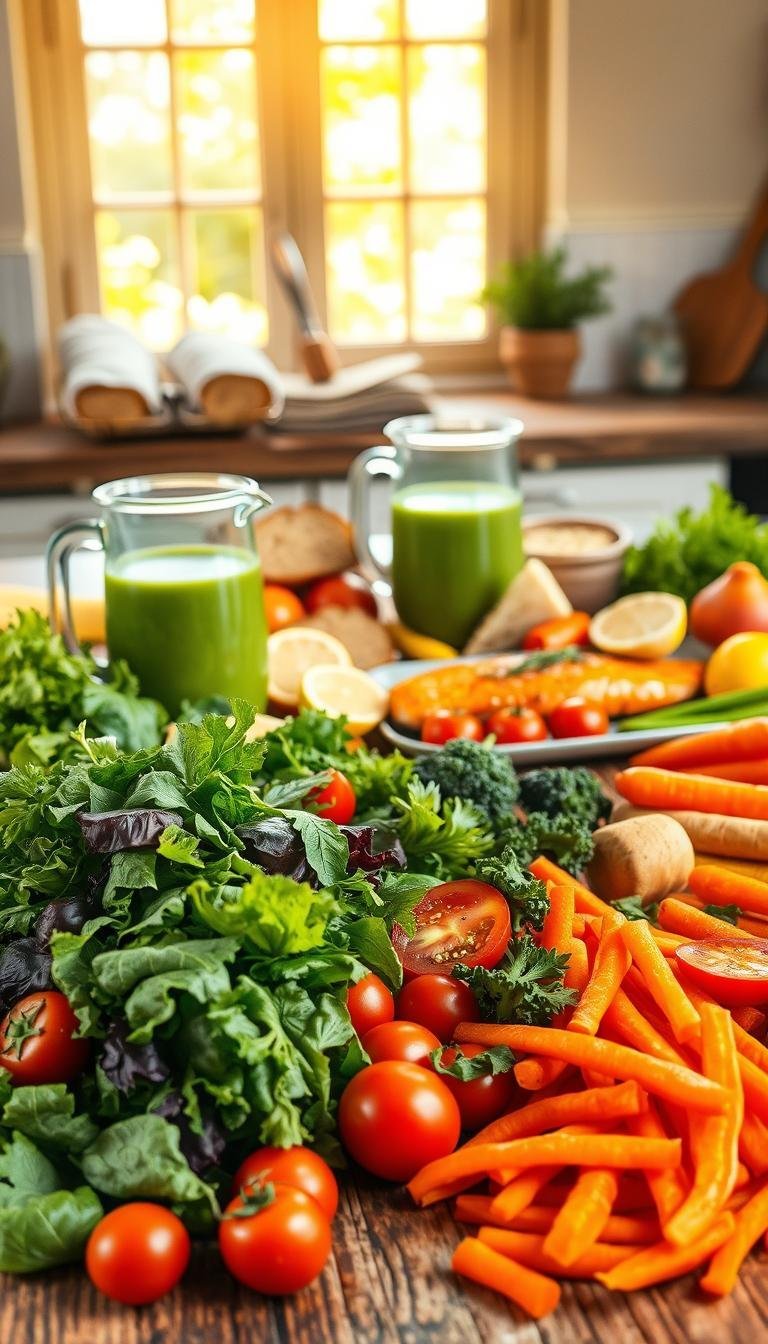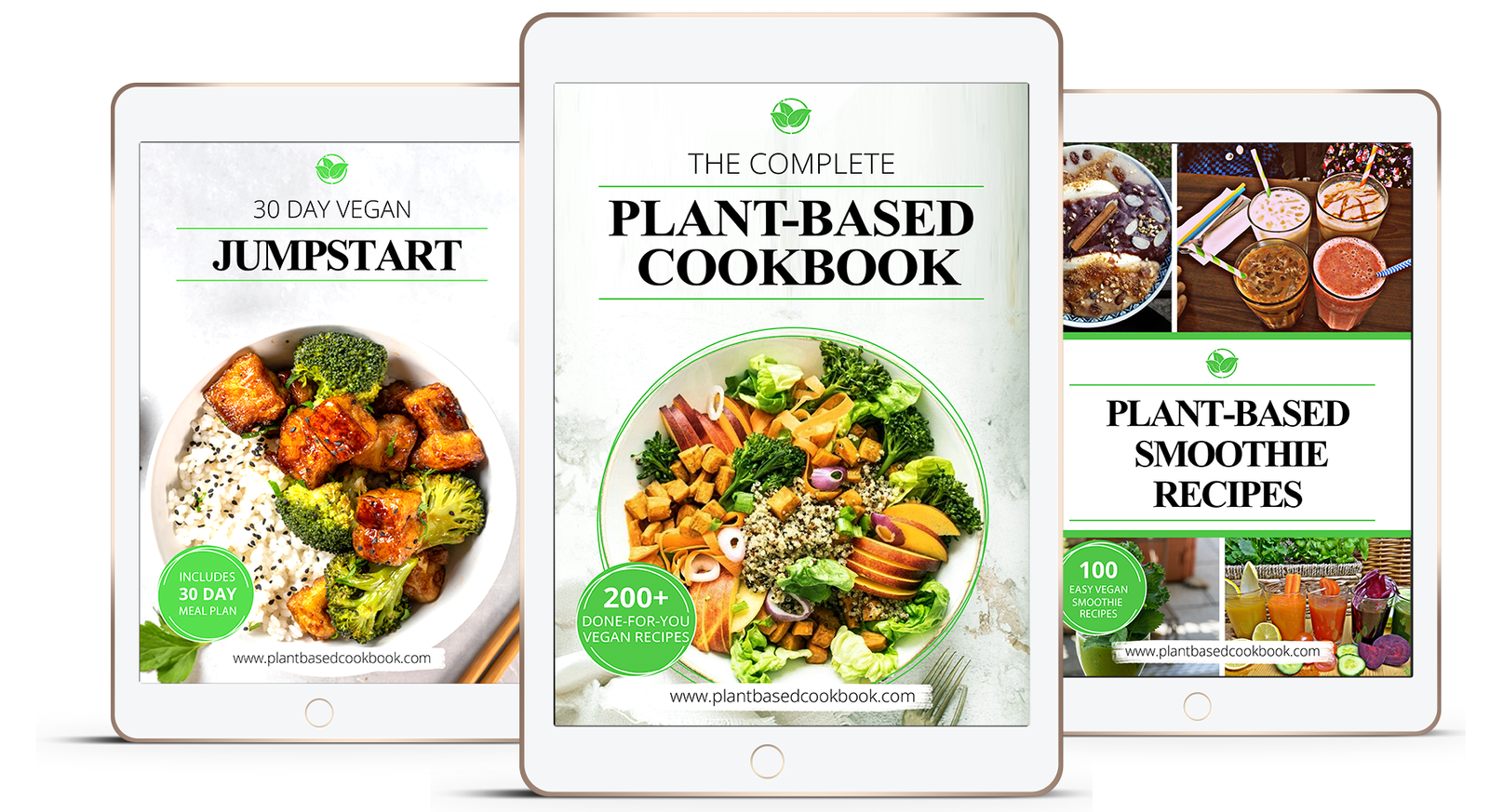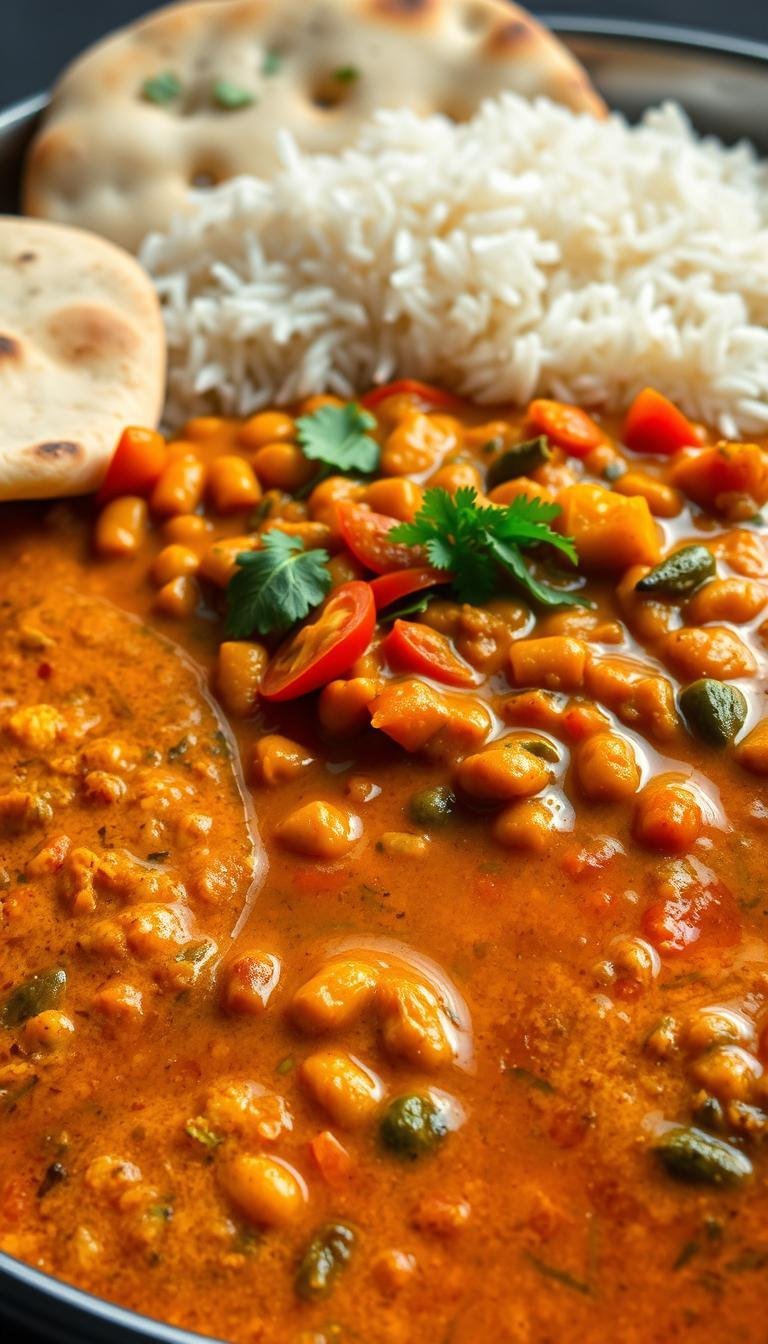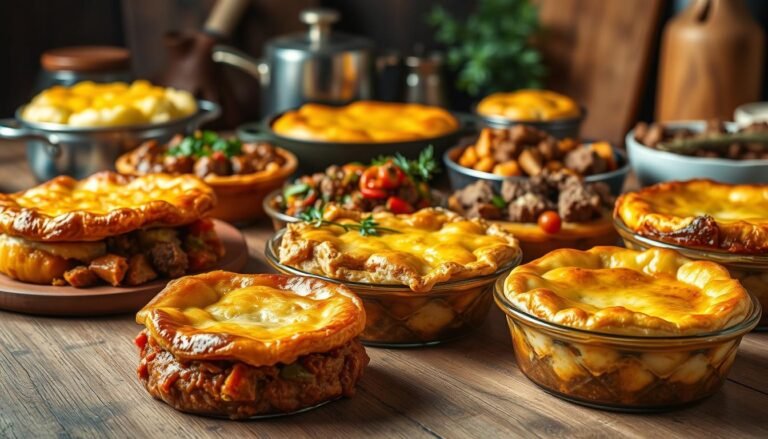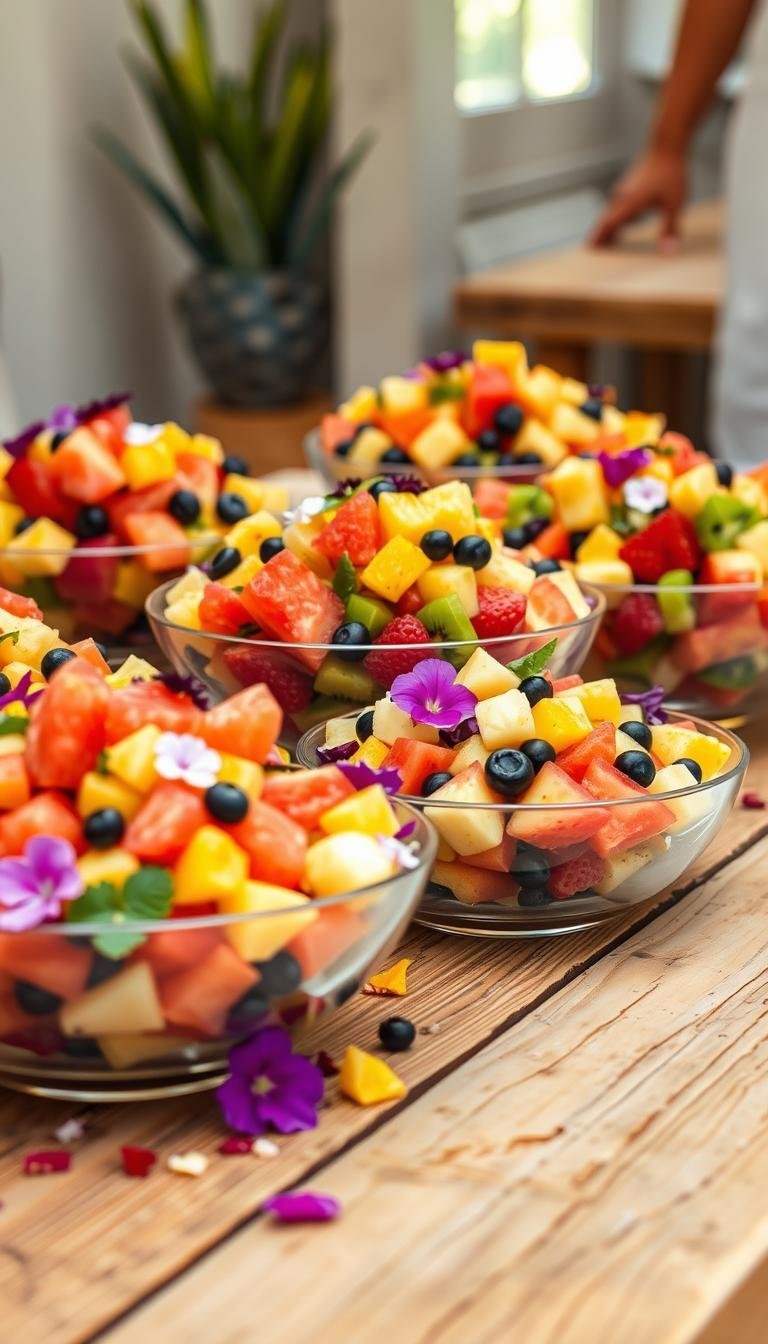(Hey! Some links in this post may be affiliate links — meaning I may earn a small commission if you buy through them, at no extra cost to you. As an Amazon Associate, I earn from qualifying purchases. I only share products I genuinely love and think you’ll find useful too. Read the full disclosure here).
Imagine eating foods just as nature made them. Clean eating means choosing foods like fresh fruits, veggies, and whole grains. It’s about picking foods that give you energy, help you focus, and keep you healthy for the long run.
Healthy eating doesn’t have to be hard. Simple foods like plain Greek yogurt, roasted veggies, or oatmeal are easy to find. By choosing these foods, you cut down on packaged snacks and sugary drinks. This helps your digestion and can help you manage your weight.
Contents
- 1 What is Clean Food?
- 2 Key Principles of Clean Eating
- 3 Understanding Food Labels
- 4 Clean Eating Meal Planning
- 5 Clean Food Recipes to Get Started
- 6 How to Transition to Clean Eating
- 7 Overcoming Common Challenges
- 8 Clean Eating on a Budget
- 9 Special Diet Considerations
- 10 The Role of Hydration
- 11 Clean Food Myths Debunked
- 12 Resources for Clean Eating
What is Clean Food?
Clean food means picking ingredients that are as natural as possible. Think fresh fruits, whole grains, and proteins without added stuff. These foods don’t have artificial flavors, colors, or preservatives.
Definition of Clean Food
Clean food focuses on foods that are minimally processed. For example, an apple is clean food—no need for labels. On the other hand, a pre-packaged snack full of chemicals isn’t.
The main idea is simplicity. If a product’s ingredient list looks like a science experiment, it’s not clean.
The Benefits of Clean Eating
- Improved digestion from fiber-rich natural foods
- Increased energy due to unprocessed nutrients
- Stronger immunity from vitamins in whole foods
- Reduced risk of chronic diseases linked to processed additives
Studies show diets full of natural foods can lower inflammation and help with weight management. Making small changes, like choosing steel-cut oats over sugary cereal, can make a big difference. Clean food isn’t a diet; it’s a way to nourish your body with real ingredients.
Key Principles of Clean Eating
Clean eating is about simple steps to change how you eat. Let’s look at the main ways to make your meals healthier.
Focus on Whole Foods
Whole foods are the heart of a clean diet. They are foods in their natural form, like fresh spinach, brown rice, or wild-caught salmon. They keep all their nutrients without added stuff.
- Fruits: Apples, berries, and citrus are full of vitamins.
- Vegetables: Dark leafy greens and cruciferous veggies give you fiber and minerals.
- Grains: Quinoa, oats, and barley offer slow-burning energy.
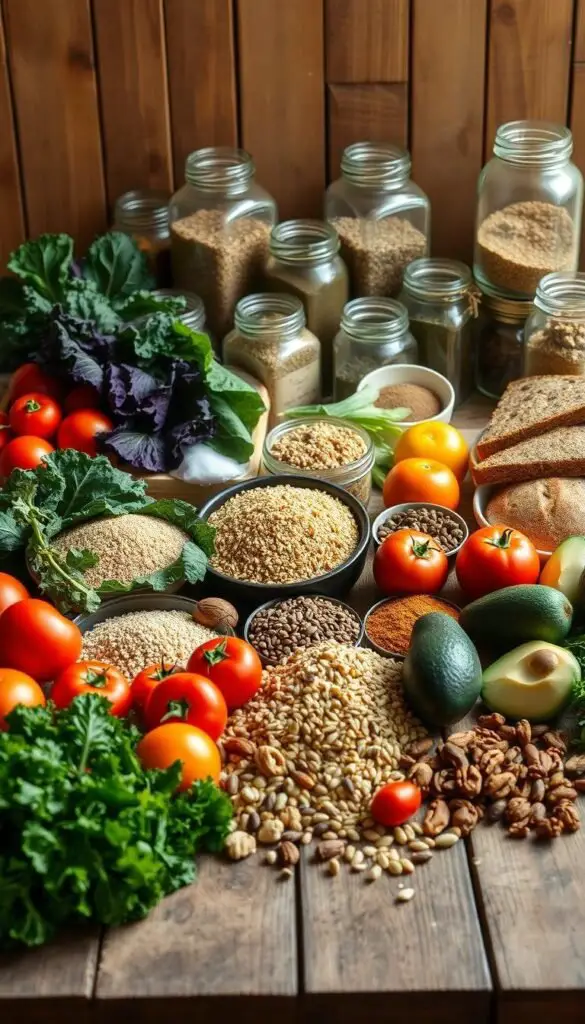
Minimizing Processed Foods
Clean food choices mean cutting down on ultra-processed items like sugary cereals or frozen dinners. Look for foods with simple ingredient lists—choose foods with ingredients you know.
Tip:Opt for minimally processed foods like canned beans or frozen veggies. They’re part of a clean diet when used right.
Start small: Swap one processed snack for a handful of almonds. Every change brings you closer to balanced, nourishing meals.
Understanding Food Labels
Reading food labels is key to clean eating. Look for certifications like USDA Organic or Non-GMO Project Verified. These labels mean the food is grown without synthetic pesticides or genetic engineering. Let’s break down how to spot the best choices.
Decoding Food Labels
Certified organic foods meet strict farming standards. Look for the USDA Organic seal. The Non-GMO Project label ensures ingredients aren’t genetically modified. Nutrition facts highlight calories and nutrients, while ingredient lists reveal what’s really inside.
- Certified organic: No synthetic additives or GMOs.
- Non-GMO: Ingredients tested for genetic modification absence.
- Ingredient lists: Shorter lists with recognizable names mean fewer additives.
“The first five ingredients make up most of the product. Prioritize whole foods over chemicals.”
Recognizing Hidden Ingredients
Sugar hides as sucrose, dextrose, or “cane syrup.” Artificial additives like MSG or BHT often lurk in ingredient lists. Avoid items with vague terms like “artificial flavors” or “color additives.”
Stick to ingredients you recognize. Clean labels list real foods, not lab-made chemicals. Avoid anything with more than five unpronounceable terms.
Clean Eating Meal Planning
Meal planning makes it easier to choose clean food every day. Start by making meals around foods that are full of nutrients. This way, you fuel your body without feeling overwhelmed.
Creating Balanced Meals
Try to have half of your plate filled with vegetables. Then, add a quarter of lean protein and another quarter of whole grains or starchy veggies. Don’t forget to include healthy fats like avocado or nuts for taste and to keep you full.
- Breakfast: Oatmeal with berries and walnuts
- Lunch: Grilled chicken salad with quinoa and olive oil dressing
- Dinner: Baked salmon with roasted sweet potatoes and broccoli

Shopping for Clean Ingredients
Shop around the store’s edges for fresh produce, meats, and dairy. Fill your cart with essentials like frozen veggies, canned beans, and whole-grain pasta for quick meals.
Make sure your pantry has these basics:
- Fresh or frozen vegetables
- Lean proteins (chicken, tofu, eggs)
- Whole grains (brown rice, oats)
- Natural fats (olive oil, seeds)
Write down what you need for each meal to avoid buying things you don’t need. Choose simple foods like apples instead of apple juice. This helps keep your meals in line with your clean food goals.
Clean Food Recipes to Get Started
Ready to dive into clean eating? These simple recipes use whole ingredients to fuel your day. Swap processed snacks for nourishing meals that taste great. Whether you’re prepping breakfast or cooking dinner, these ideas make clean food approachable and exciting.
Breakfast Ideas
- Overnight Oats: Mix rolled oats with almond milk, chia seeds, and fresh berries. Refrigerate overnight for a grab-and-go meal.
- Green Smoothie Bowl:
- Spinach + frozen pineapple + banana + almond butter = creamy base.
- Top with sliced mango, coconut flakes, and goji berries.
Lunch Options
Pack smart with these healthy eating staples:
- Mason Jar Salads: Layer proteins (grilled chicken, chickpeas) at the bottom. Add quinoa, roasted veggies, and a simple olive oil/vinegar dressing last.
- Vegetable Wraps:
- Use collard greens or whole-wheat tortillas.
- Fill with hummus, shredded carrots, cucumber, and avocado.
Dinner Inspirations
Clean food doesn’t mean complicated. Try:
- Sheet Pan Dinners: Toss salmon fillets with olive oil, rosemary, and asparagus. Roast at 400°F for 15 minutes.
- Stir-Fry Bowl:
- Sauté tofu or shrimp with broccoli, bell peppers, and garlic.
- Serve over brown rice or zucchini noodles.
Adapt these ideas to your tastes—swap veggies, proteins, or grains. The goal is to prioritize whole ingredients while enjoying every bite.
How to Transition to Clean Eating
Starting a clean eating journey doesn’t need to be drastic. This section guides you on making changes at your own pace. Focus on natural and whole foods that match your lifestyle.
Gradual Changes versus Instant Swaps
Some people jump right into replacing all processed foods. But many do better with small, steady changes. Here’s a way to do it:
- Week 1: Swap sugary drinks for water or herbal tea.
- Week 2: Replace chips with carrot sticks or apple slices.
- Week 3: Choose oatmeal over cereal for breakfast.
- Week 4: Cook with fresh veggies instead of canned soups.
Finding Your Motivation
Think about why you want to eat cleaner. Do you want more energy? Clearer skin? Better focus? Write these reasons down. Look at them when you face challenges.
Keep a journal to see how whole foods improve your mood or energy. Celebrate small victories, like trying a new vegetable dish or avoiding fast food for a week.
Remember, it’s about progress, not being perfect. If you slip up, remind yourself of your reasons and keep going.
Overcoming Common Challenges
Switching to clean food and healthy eating can be hard. Cravings and social plans often lead to less healthy choices. But, you can enjoy your journey without giving up.
Dealing with Cravings
Cravings usually come from habit or missing nutrients. Here’s how to handle them:
- Drink water—thirst can feel like hunger.
- Have clean food ready (like cut veggies or fruit).
- Wait 10–15 minutes—cravings often go away on their own.
Social Situations and Clean Eating
Eating out or at parties doesn’t have to ruin your diet. Here’s how to stay on track:
- Look up menus before going out to find good choices.
- Bring a healthy eating dish to share, so you have something good to eat.
- Say no without feeling bad: “I’m choosing fresh foods right now.”
“Progress, not perfection, builds lasting habits.”
Being flexible is important. Enjoy treats sometimes, but always come back to whole foods. Small steps help you keep moving forward!
Clean Eating on a Budget
Many think clean eating costs a lot, but it doesn’t have to. Making smart choices can make it affordable for everyone. Focus on sustainable habits that save money and keep meals healthy.
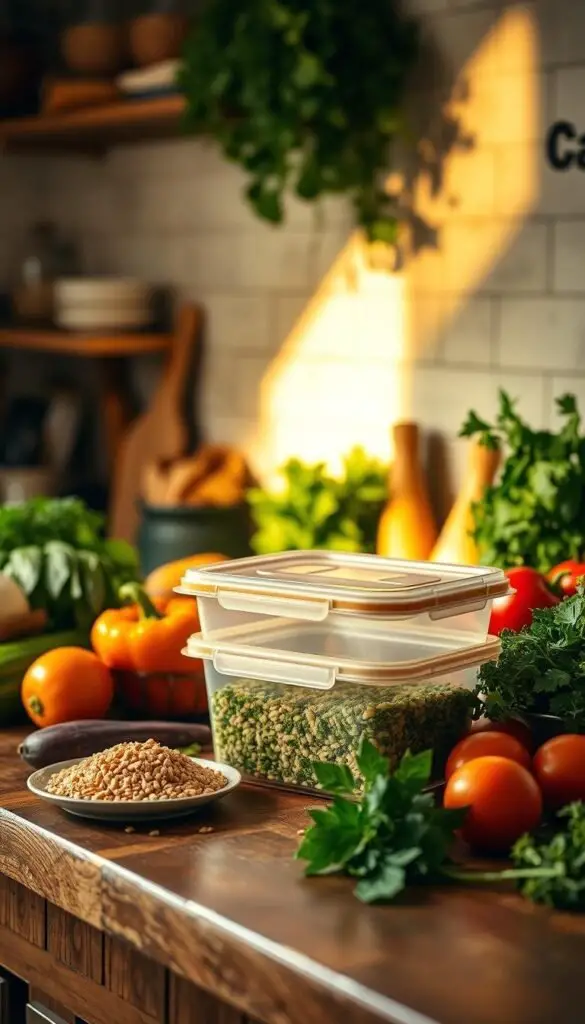
Affordable Clean Food Options
Buy staples like dried beans, lentils, and chicken breast on a budget. Fresh produce is cheaper when it’s in season. Frozen veggies and fruits are also good choices because they’re cheaper and keep nutrients.
Check out locally sourced foods at farmers’ markets. They often cost the same as grocery stores and help local farmers.
Meal Prep for Savings
Batch cooking saves money. Here’s a weekly plan:
- Shop Sunday for ingredients.
- Prepare 3-4 proteins (grilled chicken, roasted veggies) for salads, bowls, and wraps.
- Put meals in containers for easy use during the week.
Keep leftovers fresh to avoid waste. Use ingredients in different ways—like roasted sweet potatoes in breakfast hashes or dinner tacos.
Small changes can make a big difference. Combine sustainable shopping with meal prep. Then, clean eating won’t hurt your wallet or taste buds.
Special Diet Considerations
Adapting to clean food choices for specific diets is simpler than you might think. Whether you’re gluten-free or vegan, focus on natural ingredients. This keeps your meals both wholesome and nourishing.
Gluten-Free Clean Eating
Opt for whole foods like quinoa, millet, and buckwheat over processed gluten-free snacks. Look for clean food staples such as almond flour and chia seeds. A dietitian suggests:
“Avoid gluten-free products loaded with additives. Stick to unprocessed options like fresh veggies and meats for real nutrient density.”
Always check labels for cross-contamination warnings. This is to protect those with celiac disease.
Vegan and Vegetarian Options
Plant-based diets do well with whole foods. Focus on natural proteins like lentils, chickpeas, and tempeh. Pair them with seasonal vegetables for balanced meals. Here’s a guide for essentials:
- Leafy greens for iron
- Fortified plant milks for B12
- Hemp seeds for omega-3s
Avoid ultra-processed vegan “meats” full of preservatives. Instead, choose homemade soups, stir-fries, and salads. This keeps your meals clean and fulfilling.
The Role of Hydration
Hydration is vital for clean food and healthy eating. Water is more than just a drink; it’s essential for your body’s functions. It helps with digestion, keeps energy levels up, and aids in nutrient absorption from whole foods.

Water offers many benefits without added sugars or chemicals. It’s important to understand its value and make better drink choices.
Importance of Water in Clean Eating
Your body needs water to digest clean food well. Dehydration can slow down your metabolism and make you feel hungrier. Aim for 8 cups of water a day, adjusting for how active you are. Drinking a glass of water before meals can help you eat less and stay on track with your healthy eating goals.
- Keep a water bottle visible to drink regularly.
- Add lemon, berries, or cucumber for natural flavor.
Healthy Beverage Alternatives
Switch from sugary drinks to options that fit your clean food lifestyle. Here are some suggestions:
- Fruit-infused water (try orange and ginger)
- Herbal teas like mint or hibiscus
- Unsweetened almond milk or coconut water
“Even ‘natural’ juices can hide added sugars. Stick to water and low-sugar choices,” advises registered dietitian Maya Patel.
Always check labels for hidden sugars or artificial additives. Clean eating means choosing drinks as natural as possible. Small changes, like choosing sparkling water over soda, can make a big difference.
Clean Food Myths Debunked
Superfoods and organic labels are everywhere in food marketing. But what’s real and what’s just hype? Let’s get to the bottom of it with some facts.
Superfoods: Fact or Fiction?
Some foods are called “super” by marketing, but their benefits aren’t magical. Blueberries, kale, and chia seeds are packed with nutrients. But they’re best when part of a balanced diet, not the only thing you eat.
- Eat a variety of colorful veggies for more nutrients than just one “super” food.
- Don’t spend extra money on trendy superfoods. Many common foods offer similar health benefits.
The Truth About Organic Foods
Organic labels are important, but they don’t mean everything is perfect. Here’s what you need to know:
- Organic farming avoids synthetic pesticides, but non-GMO doesn’t always mean organic.
- Use the Environmental Working Group’s “Dirty Dozen” list to know when to choose organic (like berries and spinach).
“Choose organic when you can, but a diet full of whole foods—even conventional—is better than none.” – Dr. Taz Bhatia, MD
Clean eating isn’t about being perfect. Focus on whole foods first. Then, use labels like organic wisely. Science shows that small, consistent changes are more important than following every trend.
Resources for Clean Eating
Starting a clean eating lifestyle is easier with the right tools and advice. Check out these resources to learn more and stay on track.
Books and Blogs to Explore
For solid advice, read Eat Whole Foods by Dr. Mark Hyman. It mixes science with easy farm-to-table recipes. The Minimalist Baker blog has simple, plant-based meals that are good for the planet.
Registered dietitian Dawn Jackson Blatner’s The Flexitarian Diet is all about balance. It focuses on whole foods and local, seasonal ingredients.
Apps for Clean Eating Success
Apps like Yummly make finding clean recipes easy. Fooducate scans barcodes to show you additives to avoid. Isara connects you to local farmers markets for fresh, sustainable food.
The Eartheasy app helps you shop eco-friendly. It supports healthy and sustainable choices.
Clean eating is a journey for you. Use these tools to find what works for you. Small steps towards whole foods and sustainability lead to big changes. With these resources, you’re set to explore, try new things, and take care of yourself and the planet.

